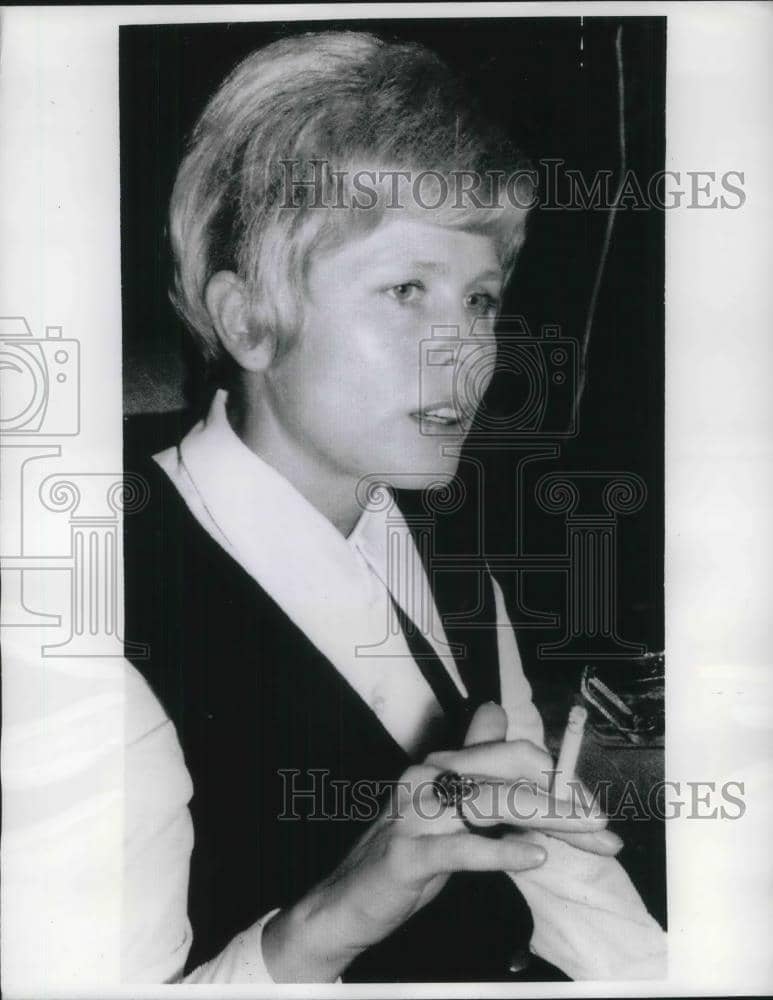Raya Kiselnikova: the Russian spy who defected to Mexico
Raya Kiselnikova was working in the Russian embassy in Mexico in 1970, but she met a Mexican who made her quit her job and her country, triggering an estrangement between the Mexican and Soviet governments.

There are many cases throughout history where love flourishes in the midst of adversity, even in the midst of wars. This is a case of love during the "coldest" time of the so-called "cold war" in Mexico, referring to the year 1970 when Mexico was the scene of a game of espionage and counter-espionage between the Soviets, Americans, Cubans, British and French. In this scenario, a love story occurred that caused a Russian spy to defect from her country, generating a diplomatic conflict, all for the love of a Mexican man.
Perhaps the name Raya Kiselnikova does not tell you much, but her name appears in the deserters of the extinct KGB list, a known Soviet spy intelligence agency. She was working in the Russian embassy in Mexico in 1970, but she met a Mexican national who made her quit her job and her country, triggering an estrangement between the Mexican and Soviet governments. Remember that at that time of the so-called "cold war", the highest levels of the Mexican government worked for hand in hand with the U.S. Central Intelligence Agency, better known as the CIA for its acronym in English. Mexico was a strategic territory for espionage between the United States and the Soviet Union during that period.
The U.S. CIA maintained one of its largest offices here, and the Soviet Union used the embassy as a center of operation for KGB agents undercover as diplomats. At the instruction of the Soviet Government, young Raya Kiselnikova was sent to Mexico as a translator assigned to the commercial office of the embassy. She arrived in the country on July 4, 1968, her arrival coincides with the beginning of the student movement and a strong anti-communist campaign promoted by the government of then-President Gustavo Díaz Ordaz. Raya was 32 years old, a widow, her husband had been a Soviet nuclear scientist, she had no children and spoke four languages fluently, besides being an excellent secretary originally from Moscow.
She came from a family that had been sent to concentration camps for Soviet citizens during Stalin's regime because they had expressed some kind of discontent with socialism. She and her family were accused of being anti-communist and anti-leftist, and were released a few years later; and although she had been "rehabilitated" by the Soviet Government, she retained a grudge against her country. As a security measure, upon her arrival in Mexico, the embassy took away her passport and personal documents so that she could not flee to another country. In her work at the embassy, Raya Kiselnikova was forbidden to interact with people of other nationalities, but that did not prevent her from going out to visit places of cultural interest in Mexico, such as archaeological sites, museums, galleries, etcetera.
It was during one of her visits to one of the country's museums where she met a young Mexican named Francisco Lurueña, who upon seeing her was immediately captivated by her beauty and elegance. The chemistry between them was immediate, she was so enchanted by Paco that they went together for a weekend to Cuernavaca, Morelos on Saturday, December 13, 1969. Raya and Paco were together all day, and she didn't have time to return to Mexico City, so Raya decided to stay in Cuernavaca all night. Since she did not report to the embassy, something that was mandatory for all embassy personnel, when she returned to Mexico City, she was immediately subjected to intense interrogation to reveal with whom she had spent the night.
The young woman, visibly offended because she was accused of being a spy and of being a woman without morals, refused to answer the questions of Oleg Netchiporenko, second consular secretary, whom the Mexican Federal Security Directorate had already identified as an undercover agent of the KGB. To the insistent questions, the young translator responded with the same refusal: "I'm not going to tell you", which generated great concern in the KGB agent, since it was usual for the American CIA to infiltrate its agents, leading them to change sides.
Raya flatly refused to say where and with whom she had been. She knew she could be sent back to the Soviet Union or even charged with espionage, so she made the excuse that she had slept with an embassy colleague she did not want to compromise. But since she did not want to reveal who this person was, then apparently everything remained there, as a mere incident. Behind her back it was decided to forcibly send her back to the communist "paradise", discreetly so as not to arouse suspicions about the real reasons for her departure.
Two months later and without her realizing it, in February 1970, everything was planned for Raya to return to the Soviet Union, taking advantage of the visit to Mexico of the Soviet soccer team, which would play a friendly match with the Aztec national team with a view to the 1970 World Cup in Mexico. After the match, she would be put on a plane with her country's team to East Germany under the pretext that she would serve as a translator.
The authorization for her transfer to the Soviet Union arrived from Moscow, where it was informed that she would be placed under the protection of the KGB as soon as she arrived in the country, but the destiny was in Raya's favor. That telegram, by mistake, was sent to the commercial section of the embassy where Raya worked and was placed on her desk. When she read it, she realized what was going to happen to her and looked for Paco to help her escape from the apartment located very close to the Soviet embassy in Mexico City.
One night with Paco's help, Raya was able to evade the strict surveillance and went to take refuge at the Mexican Ministry of the Interior to ask for political asylum. Hours later, Oleg Netchiporenko arrived with two other Soviet agents to report Raya's alleged kidnapping by the Mexican, only to find her surrounded by Federal Security Directorate personnel. Netchiporenko wanted to reason with Rayak who was crying inconsolably, assuring him that she had nothing to fear and that this telegram was a routine message and that this was how all those coming from the KGB were written they looked threatening, but in reality, they were not.
Raya was beginning to believe Netchiporenko's words, suddenly she saw a military intelligence officer arrive, who only appeared when it was necessary to "disappear" uncomfortable people, which caused her to panic and start screaming. At that instant, the Mexican Federal Security Department agents told the Soviets that the interview was over and according to the records Raya received official protection. Raya later testified before Mexican authorities that Soviet officials had pressured her to say with whom she had gone out of town, suspecting that she had provided some improper information because of her political background. These testimonies can be found in the case file kept in the General Archive of the Nation, in gallery number 1.
On March 4, 1970, Raya appeared before the media at the Hotel Vistahermosa in Mexico City, in her press conference, she assured that she could no longer bear to live under the Soviet regime and denounced that Netchiporenko had her under constant surveillance. The Mexican authorities transferred Raya to the U.S. intelligence agencies where she became an informant for them and would explain to them about the KGB activities in Mexico.
She would be transferred from Acapulco where they would get her a job as a secretary in a luxurious hotel. Although Raya did not know much about espionage since she worked in the commercial office, she did know the names of those who worked in the embassy as undercover KGB agents. The CIA's main use of the information provided by Raya was to make it public to embarrass and harass the government of the Soviet Union.
The CIA had tried to recruit Netchiporenko many years before without success, so since he would not be recruited, the U.S. intelligence agency used Raya's defection to make it widely known that Netchiporenko was a KGB officer and to accuse him of being an instigator in the 1968 student revolts in Mexico. The CIA's version of Netchiporenko would reach the ears of the Mexican government who would also learn that the Soviet recruited young Mexicans who sympathized with leftist movements to train them at the Patricio Lumumba University in Moscow.
Furthermore, he encouraged the organization of guerrilla groups that would operate in Mexico in the seventies; among his recruits, for example, was Daniel de la Pedraja Muñoz, who was an official of the Ministry of Foreign Affairs and who had served as Mexican ambassador to China, Cuba, the UN, and Spain. The Mexican government had wanted to get rid of Netchiporenko for several years and the Raya incident would be one more "scratch on the tiger", but what ended up triggering a diplomatic scandal was in November 1970, when Netchiporenko broke into the house of a Mexican woman named Cristina Aguirre Martinez, girlfriend of a Soviet asylum seeker that the KGB was looking for in Mexico.
Cristina became aware of the break-in and denounced the Soviet official to the Ministry of the Interior; the reaction of the government of President Luis Echeverría (a CIA undercover agent, by the way) was to declare five Soviet diplomats, including Netchiporenko, as well as the delegation's chargé d'affaires, persona non grata. The Federal Security Directorate formally accused Netchiporenko of having encouraged from the Soviet embassy the formation of left-wing guerrilla groups, especially the so-called Revolutionary Action Movement MAR and the so-called September 23 Movement.
They were escorted to the Mexico City airport where they boarded a plane for East Germany on March 21, 1971. Thus ended this diplomatic scandal of espionage and counter-espionage, intrigues, bribes, accusations, expulsions, etc., which was triggered by the love of a lady who was not allowed to have a relationship with a Mexican.




